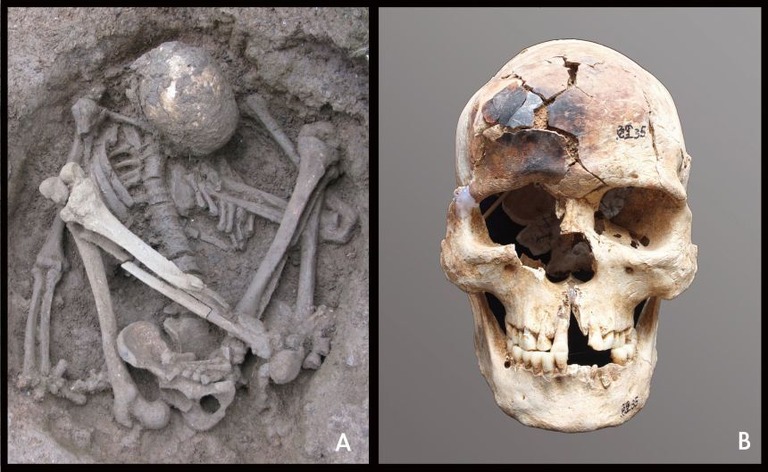最近、
アジアで
とても古いミイラ
作りの
痕跡が
見つかりました。
Recently, traces of extremely ancient mummification techniques have been discovered in Asia.
は
約1
万4000
年前のもので、エジプトのミイラよりも1
万年も
前です。
These are traces from about 14,000 years ago, which is 10,000 years earlier than the mummies of Egypt.
オーストラリア
国立大学の
研究チームが
発表しました。
The research team at the Australian National University announced this discovery.
ミイラ
作りは、
死んだ
人の
体を
煙でいぶして
乾かす
方法です。
This mummification method involves drying the body by smoking it with smoke.
することで、
体の
水分がなくなり、
腐らなくなります。
Therefore, the moisture in the body is removed, and the corpse does not decompose.
は、
今でもパプアニューギニアの
一部の
人たちが
使っています。
This technology is still used today in some communities in Papua New Guinea.
は、
アジアの
いろいろな
場所で
見つかった54
体の
人骨を
調べました。
The research team examined 54 sets of human remains discovered in various locations across Asia.
には、
足を
大きく
曲げて
埋められた
骨もありました。
Among them, there are also bones that were buried in a bent-legged position.
ような
埋葬方法は、
昔の
中国南部や
東南アジアで
よく見られます。
This burial method was once common in southern China and Southeast Asia.
、
骨の
一部に
焦げた
跡がありましたが、
全部の
骨が
黒くなっているわけではありませんでした。
Additionally, some of the bones show signs of being charred, but not all of them are blackened.
さらに、
特別な
機械を
使って
骨を
調べると、
低い
温度で
長い
時間、
熱や
煙にさらされた
証拠が
見つかりました。
Furthermore, when the researchers examined the bones with special equipment, they found evidence indicating that the bones had been exposed to low heat and smoke for an extended period of time.
のことから、
昔の
人たちは
死者をうずくまった
姿勢にして、
煙で
乾かしてから
埋葬したと
考えられます。
From these facts, scientists believe that ancient people placed bodies in a crouched position, dried them with smoke, and then buried them.
は、
家族や
大切な
人と
ずっといっしょにいたいという
気持ちから
生まれたものです。
This custom began from the desire to be together forever with a loved one.
が
高い
アジアでは、
燻製ミイラが
遺体を
守るために
最も
良い
方法だったのでしょう。
In humid regions like Asia, mummification through smoking may be the best method for preserving bodies.
パプアニューギニアでは、
遺体をミイラにするために
家族が
何カ月も
世話を
続ける
そうです。
Today in Papua New Guinea, families care for mummies for months, continuing to preserve the bodies of their relatives.

